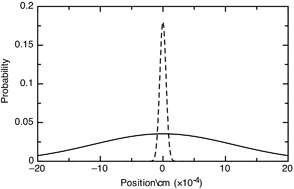We describe the application of Extreme Value Statistics to the analysis of discrete species that possess distinguishable properties (fluorescence wavelength, fluorescence intensity, light scattering, etc.) as they cross a well-defined observation/probe region. Time-gated selection and extreme value data analysis result in increased resolution in analytical determinations. When only the data corresponding to the smallest crossing times are selected for analysis, the width of the diffusion band decreases for the measured parameter. The molecules with the smallest crossing times diffuse preferentially along the flow direction. A Monte Carlo technique and the probability density function (pdf) for a freely diffusing species are used to generate data streams to provide a theoretical basis for the aforementioned phenomenon. These calculations are included to characterize the effect of the average flow rate and the diffusion constant. We have also included a procedure for extracting the normal diffusion constant (D) from the Extreme Value Distribution. In contrast to standard flow analysis, which requires long path lengths, our approach is particularly suited for measurements in picolitre and nanolitre volumes and provides another dimension to single-molecule measurements in cellular size volumes. We believe that this is a general phenomenon that depends upon the details of the pdf, which can be complex.

You have access to this article
 Please wait while we load your content...
Something went wrong. Try again?
Please wait while we load your content...
Something went wrong. Try again?


 Please wait while we load your content...
Please wait while we load your content...